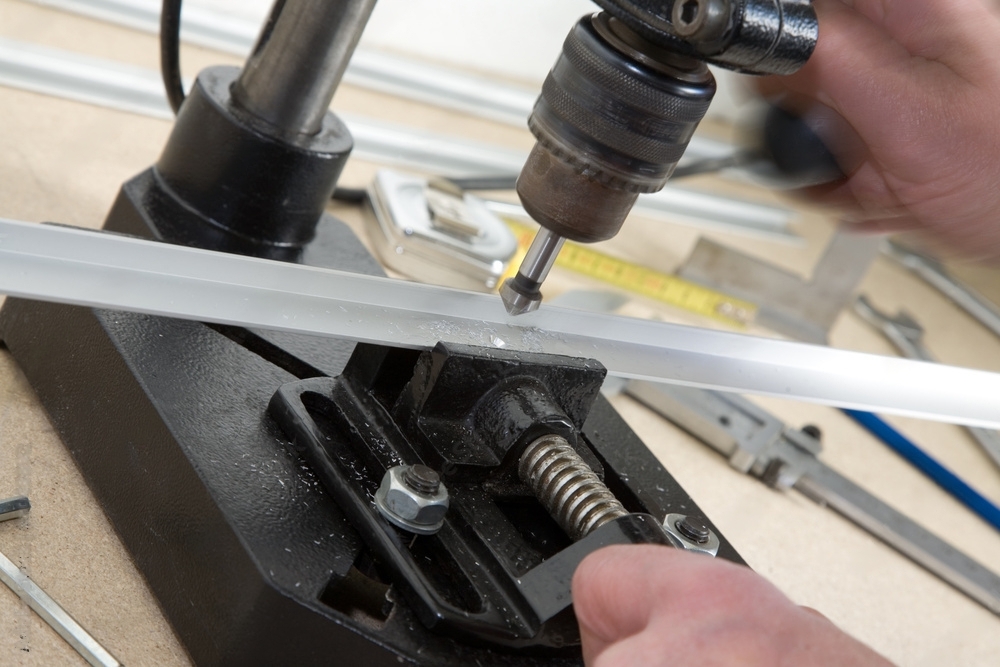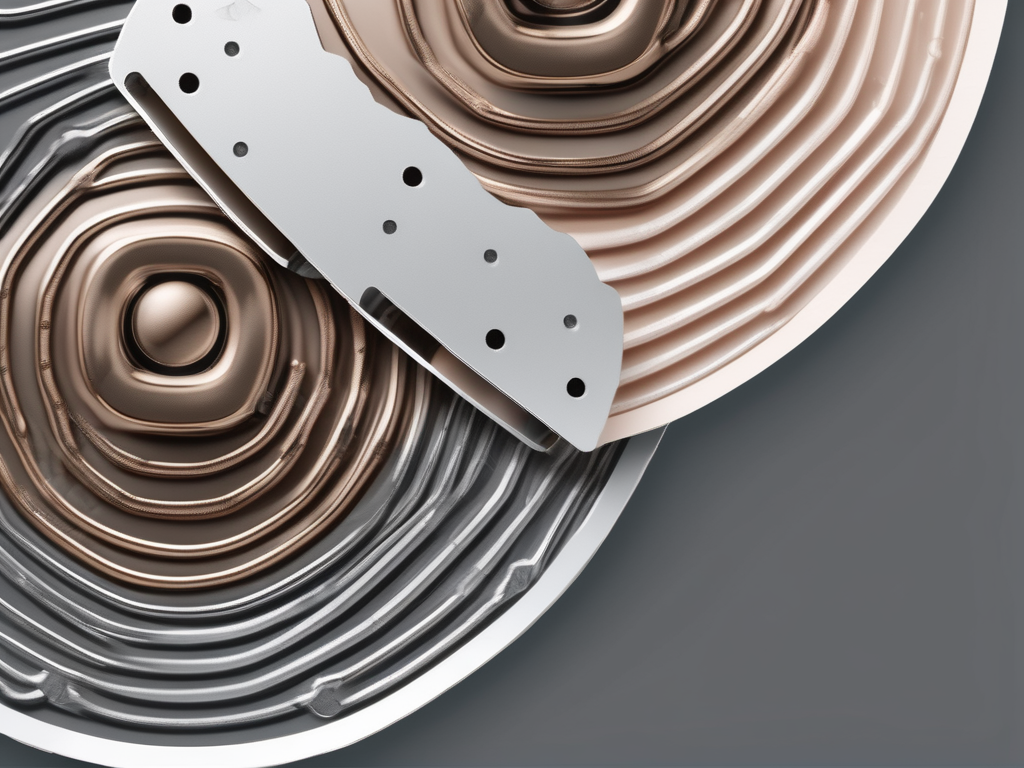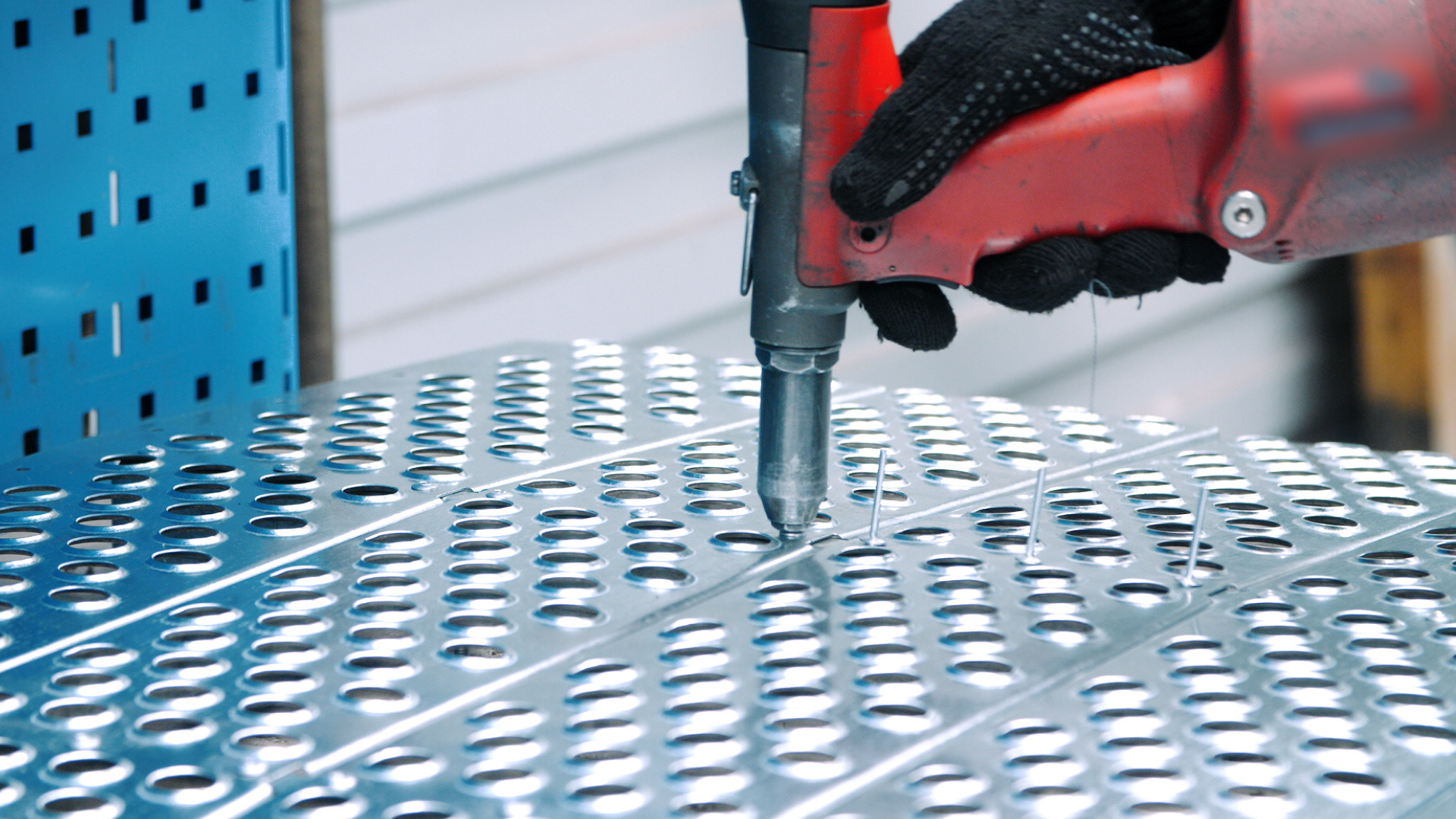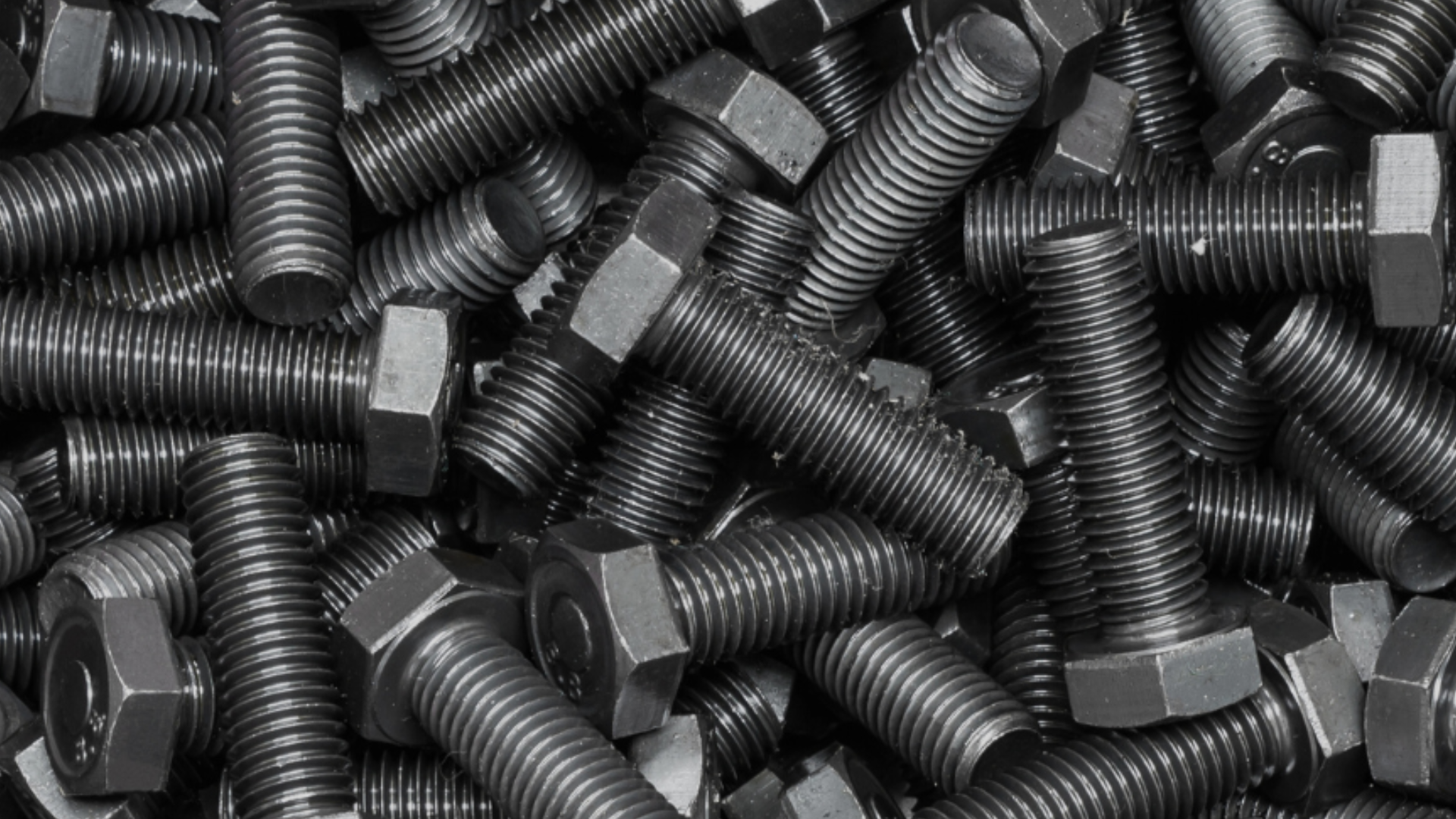Countersinking is a crucial technique in metal fabrication that can make all the difference in the success of your projects. Whether you are a seasoned professional or a DIY enthusiast, understanding the purpose and benefits of countersinking is essential. In this article, we will delve into the world of countersinks, explore different types of tools and bits, and provide step-by-step instructions to help you achieve a flawless finish. So let’s dive in!
Table of Contents
Understanding the Purpose of Countersinks
Before we dive into the nitty-gritty of countersinking, let’s first understand its purpose. Countersinks are specially designed holes that allow screws to sit flush with the surface of a metal object. They provide a neat, professional look while also preventing the screws from interfering with the overall functionality and aesthetics of your project. Countersinking not only enhances the visual appeal but also contributes to the longevity and reliability of your metal fabrications.
Countersinks are commonly used in various industries, including woodworking, metalworking, and construction. In woodworking, countersinks are essential for creating a smooth and seamless finish on furniture, cabinets, and other wooden structures. They ensure that the screws are hidden and do not protrude, which not only improves the appearance but also reduces the risk of snagging or splintering.
In metalworking, countersinks are crucial for applications such as aircraft manufacturing, automotive assembly, and electronic device production. These industries require precision and attention to detail, and countersinking plays a vital role in achieving that. By creating a recessed area for the screw head, countersinks allow for a secure and flush fit, reducing the chances of damage or loosening over time.
Furthermore, countersinking is not limited to metal and wood. It is also used in plastic fabrication, where it helps ensure a seamless and professional finish in products such as consumer electronics, household appliances, and medical devices. Countersinks in plastic materials provide a clean and polished appearance while maintaining the structural integrity of the product.
Countersink vs. Counterbore: Which Hole is Right for You?
When it comes to creating holes for your screws, you might come across two common terms – countersink and counterbore. While both serve the purpose of hiding screws, they differ in depth and shape.
A countersink hole has a cone-shaped opening that allows the screw head to fit snugly, while a counterbore hole is cylindrical and typically wider than the screw head. The choice between the two depends on your specific project requirements, such as the type of screw you are using or the desired depth of the hole. Experiment with different options to find what works best for you!
Countersink holes are commonly used when the screw head needs to be flush with or slightly below the surface of the material. This is often the case in woodworking, where a smooth and even finish is desired. The cone-shaped opening of a countersink hole provides a precise fit for the screw head, ensuring a secure connection without any protrusions.
On the other hand, counterbore holes are used when the screw head needs to be completely hidden within the material. These holes are wider and deeper than countersinks, allowing the screw head to sit entirely below the surface. Counterbore holes are often used in applications where aesthetics are crucial, such as high-end furniture or decorative metalwork.
It’s important to note that countersinking and counterboring can also be combined in certain situations. This is known as a combination hole, which features both a countersink and a counterbore. Combination holes offer versatility and flexibility in screw placement, allowing for different depths and levels of concealment.
Ultimately, the choice between countersink and counterbore holes depends on the specific requirements of your project. Consider factors such as the material being used, the type of screw, the desired appearance, and the functional needs of the application. By understanding the purpose and characteristics of each hole type, you can make an informed decision that will result in a successful and visually appealing outcome.
The Benefits of Using Countersunk Holes
Now that we understand the purpose of countersinking, let’s explore the benefits it brings to your metal fabrication projects.
Enhanced Aesthetics
A well-executed countersink adds a touch of finesse to your metal objects. It hides the screw heads, giving the surface a clean, uncluttered appearance. Whether you are working on architectural designs or creating decorative metal pieces, countersunk holes are a must for a polished final look.
Imagine a beautifully crafted metal sculpture adorning a public space. Without countersunk holes, the screws would interrupt the smooth lines and sleek surface of the sculpture, detracting from its overall aesthetic appeal. However, with countersunk holes, the screws blend seamlessly into the metal, allowing the sculpture to shine in all its glory.
Not only do countersunk holes enhance the aesthetics of your metal objects, but they also provide practical benefits that contribute to the overall quality and longevity of your projects.
Prevention of Splintering
Countersinking is particularly crucial when working with brittle materials such as metal. By incorporating countersunk holes, you minimize the chances of splintering or cracking, ensuring the structural integrity of your project remains intact. Say goodbye to unsightly cracks and hello to robust and reliable metal fabrications!
Imagine a metal cabinet door that requires screws for assembly. Without countersunk holes, the pressure exerted by the screws could cause the metal to splinter or crack, compromising the door’s strength and durability. However, with countersunk holes, the screws fit snugly into the metal, distributing the pressure evenly and preventing any potential damage.
Countersunk holes not only protect your metal objects from splintering but also contribute to their overall strength and longevity.
Improved Fastening
Countersunk holes help screws sit flush with the surface, providing a more secure and stable fastening. This prevents the screws from loosening over time, reducing the risk of structural failure. No more wobbly joints or insecure connections!
Imagine a metal staircase that requires screws to hold the steps in place. Without countersunk holes, the screws would protrude from the surface, creating an uneven and potentially hazardous walking surface. However, with countersunk holes, the screws sit flush with the metal, ensuring a secure and stable connection between the steps and the structure.
Countersunk holes not only improve the overall appearance of your metal objects but also contribute to their structural integrity and safety.
Easier Surface Finishing
When it comes to painting or coating your metal objects, countersunk holes offer a significant advantage. Since the screws are flush with the surface, you can easily apply a smooth, uniform coat without any interruptions or bumps. Achieving that flawless finish has never been easier!
Imagine a metal gate that requires a fresh coat of paint. Without countersunk holes, the screws would create small indentations on the surface, making it challenging to achieve a smooth and even finish. However, with countersunk holes, the screws are recessed, allowing the paint to glide seamlessly over the surface, resulting in a professional-looking paint job.
Countersunk holes not only improve the functionality and aesthetics of your metal objects but also simplify the surface finishing process, saving you time and effort.
Mastering the Art of Countersinking
Now that we’ve covered the benefits, let’s delve into the key factors and techniques to keep in mind when countersinking your metal fabrications.
Key Factors to Keep in Mind When Countersinking
- Choose the right size and type of countersink tool for your project. Different materials may require specific tools, so make sure you have the appropriate bit for the job.
- Pay attention to the angle and depth of your countersink. The angle should match the screw head, and the depth should be sufficient for the screw to sit flush with the surface.
- Ensure that the countersink and the pilot hole are aligned correctly. Misalignment can create uneven surfaces or lead to weak fastening.
Exploring Different Types of Countersink Tools and Bits
Countersinking tools come in various shapes and sizes to accommodate different project requirements. Let’s take a look at some common ones:
- Single-flute Countersink: Ideal for softer materials like wood, these tools provide a clean, precise cut.
- Multi-flute Countersink: These tools are versatile and suitable for a wide range of materials, offering quick and efficient countersinking.
- Combined Drill Bit and Countersink: Perfect for pilot holes and countersinking in one go, these tools save you time and effort.
Step-by-Step Guide to Countersinking Screws in Your Projects
Ready to put your countersinking skills to the test? Follow these simple steps:
- Mark the desired location of your countersink on the metal object.
- Drill a pilot hole slightly smaller than the screw diameter.
- Select the appropriate countersink tool and attach it to your drill.
- Align the countersink with the pilot hole and start drilling, applying steady and even pressure.
- Stop drilling once the desired depth and angle have been achieved.
- Clean away any metal shavings or debris from the countersink hole.
- Insert the screw into the countersink hole and tighten it securely.
Expert Tips for Achieving a Flawless Countersink Finish
Though countersinking is a relatively simple technique, a few expert tips can help you achieve that perfect finish:
- Practice on scrap pieces before working on your actual project to get a feel for the process and improve your technique.
- Use protective eyewear and gloves when countersinking to ensure safety and prevent any potential injury.
- Regularly clean and maintain your countersinking tools to ensure they remain sharp and in good working condition.
Answering Common Questions About Countersinks
When Should I Use a Countersink?
A countersink is recommended whenever you want to conceal screw heads and achieve a flush surface. It is commonly used in woodworking, metal fabrication, and various other industries where aesthetics and functionality are equally important. So, whenever you find yourself in need of a clean and well-finished look, reach for that countersink tool!
Can I Countersink Different Materials?
Absolutely! Countersinking is not limited to a specific type of material. It can be done on various metals, wood, plastics, and more. Just make sure you choose the appropriate countersink tool and adjust your technique accordingly. It’s always a good idea to test on a small, inconspicuous area before committing to the full project.
Now armed with the knowledge of why countersinking is essential and how to master it, it’s time to elevate your metal fabrication projects to the next level. Remember, with a little practice and attention to detail, you can achieve flawless finishes that will impress even the most discerning eyes. So go ahead, embrace the art of countersinking, and watch your metal creations shine!



